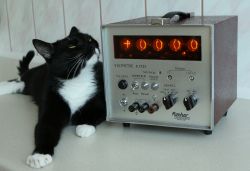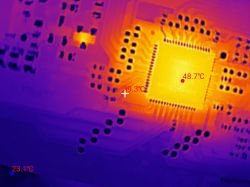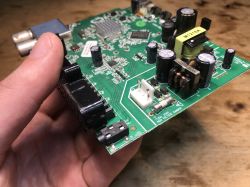FAQ
TL;DR: Voltage dropped 11 V (237 → 226 V) under two kettles [Elektroda, 21147426]; expert says "the surge and USB systems turned out to be a single 14D471K varistor" [Elektroda, 21147242]. The €10 Interlook BA-3505 offers minimal protection and sub-standard wiring.
Why it matters: Hidden shortcuts can overheat, void insurance, and leave connected gear unprotected when lightning or grid spikes arrive.
Quick Facts
• Price: ~45 PLN / €10 [Elektroda, 21147242]
• Advertised load: 2 500 W (≈10 A) [Elektroda, 21151834]
• Actual conductor area: ~0.5 mm² vs claimed 1 mm² [Elektroda, 21147625]
• Surge part count: one 14D471K MOV, no fuse [Elektroda, 21147242]
• Measured voltage sag: 237 V→226 V at ~3.7 kW load [Elektroda, 21147426]
What is the “anti-surge system” really?
It is a single 14 mm 471 V varistor (MOV) soldered between live and neutral. No series fuse, thermal cut-off or filter network is present [Elektroda, 21147242].
Is any USB-specific protection included?
No. The strip lacks USB outlets entirely; the vendor re-used marketing text from another model. The only component is the MOV described above [Elektroda, 21147242].
How much power can the BA-3505 safely handle?
The label states 2 500 W, yet 0.5 mm² leads and thin switch contacts are rated for roughly 6 A continuous (≈1 400 W). Higher loads raise temperature and voltage drop [Elektroda, 21147625].
Why is single-pole switching risky?
Each rocker cuts only one conductor. If the plug orientation puts phase on the unswitched side, devices remain live even when “off,” defeating safety and increasing shock risk [Elektroda, 21147242].
How large is the voltage drop along the strip?
With two kettles (~3.7 kW) the end socket fell to 226 V, an 11 V sag from the wall value [Elektroda, 21147426]. This indicates high resistance paths and possible overheating under load.
Are the earth (PE) connections reliable?
Not reliably. Users report loose rivets allowing earth pins to rotate and even detach, breaking the PE path [Elektroda, 21150890; 21147242].
What build-quality issues were found?
Cold solder joints, undersized wires, rotating earth pins and a broken grounding stud after one year of light use were documented [Elektroda, 21147242; 21150890].
Is one MOV enough for surge protection?
No. Effective strips use MOVs plus thermal fuses, RC snubbers and sometimes series chokes. A lone MOV can fail shorted and ignite if a large spike hits [IEEE Surge Guide].
Which standards should real surge strips meet?
Look for EN 61643-11 or UL 1449 certification, built-in thermal disconnects, and a replaceable fuse or breaker. These specs cap let-through voltage and prevent fire after MOV failure [UL, 2023].
What are safer alternatives?
Models from Brennenstuhl Secure-Tec or Lestar LFT-2001 include multi-MOV arrays, filters and proper 1.5 mm² wiring, albeit at €25–40 [Elektroda, 21157543; 21158266].
Will reversing live and neutral hurt appliances?
Most double-insulated loads work either way, but devices with EMI filters or triac dimmers can hum or leak current. One user noted quieter fridge operation when polarity was corrected [Elektroda, 21231587].
Edge case: what failures have users seen?
An earth pin fell off after 12 months, leaving metal housing ungrounded [Elektroda, 21147242]. Such faults expose users to full mains voltage during a fault event.
How does a 14D471K MOV work?
Below ~300 V RMS it behaves like an open circuit. When a spike exceeds ~775 V, it clamps, sacrificing itself to divert energy. Repeated hits degrade it, so monitoring or fusing is vital [Vishay Datasheet].
3-step DIY inspection before plugging in
- Remove cover; verify ≥1 mm² copper links and tight earth rivets. 2. Check that both mains conductors reach the main switch. 3. Confirm a thermal fuse or breaker sits in series with the MOV. If any step fails, scrap or re-work the strip.






